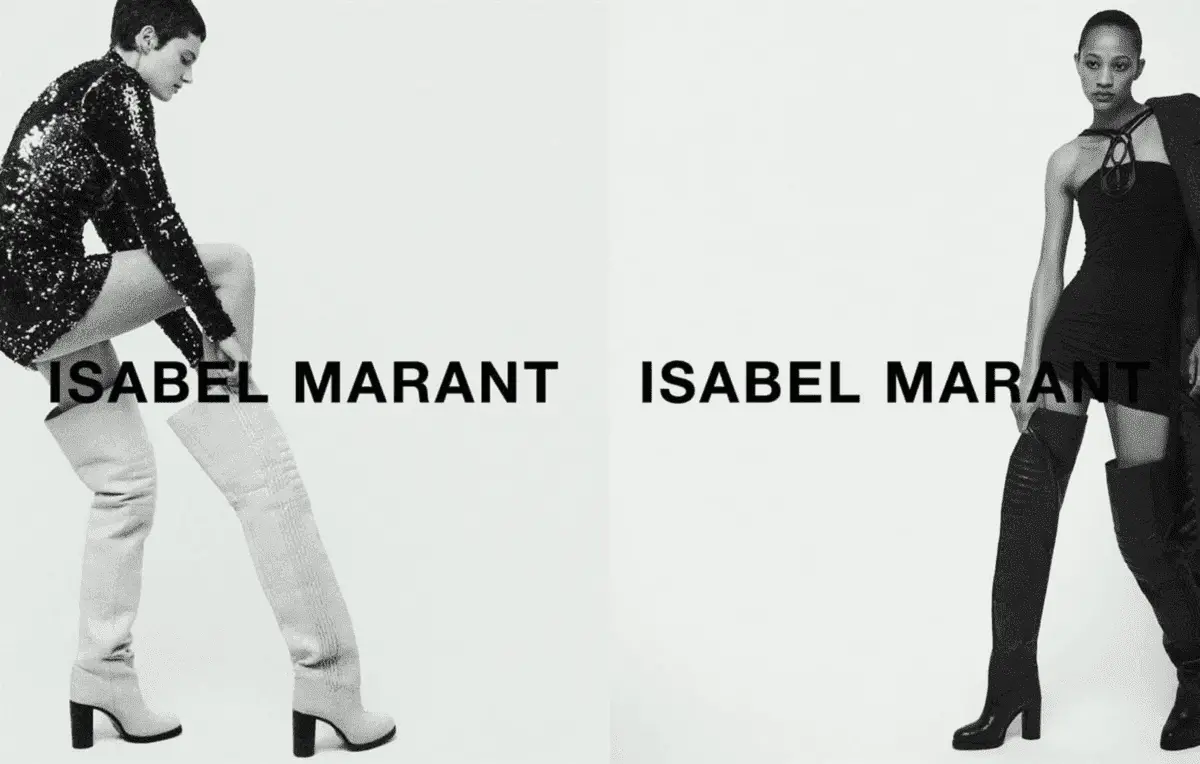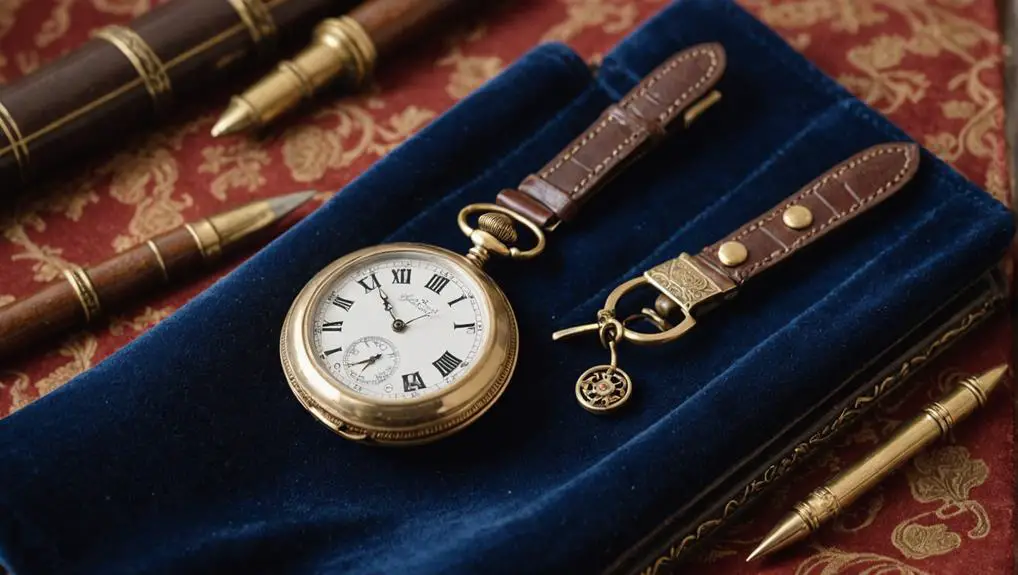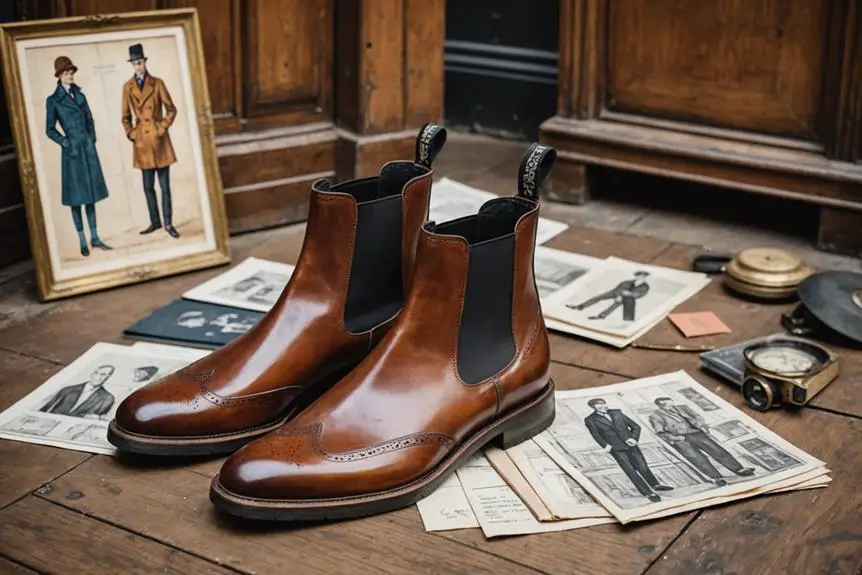The French fashion designer renowned for her eclectic and bohemian style, has not only carved a niche in the high fashion world but also significantly influenced the aesthetic sensibilities of a generation. Born on April 12, 1967, Marant has built a fashion empire that is both distinctive and impactful, resonating with a global audience that cherishes authenticity along with style. Since launching her eponymous label in 1994, Isabel Marant has been a symbol of Parisian chic, effortlessly blending the carefree spirit of boho with the sharpness of urban fashion.
Marant’s journey in the fashion industry began shortly after her studies in 1987, working under the tutelage of prominent designers and dabbling in various collaborative projects which honed her skills and shaped her future ambitions. Her early career saw her designing accessories and knitwear before fully establishing her brand. With each collection, Marant has not only presented fashion but narrated a story of cultural fusion, often incorporating elements from around the world, which makes her pieces not just garments but artifacts of a lived experience. Her commitment to design integrity and quality has won her numerous accolades, including the Award de la Mode in 1997 and the title of Fashion Designer of the Year at the British Glamour’s Women of the Year Awards in 2012.
Isabel Marant’s design philosophy is deeply personal yet universally appealing. She designs clothes she would wear herself, a standard that ensures each piece from her studio is practical yet fashionable. This practicality does not come at the expense of aesthetic appeal or innovation, as seen in her introduction of the wedge sneaker, which became a global trend. Marant’s brand has grown significantly over the years, with multiple boutiques worldwide and a presence in over 35 countries. This expansion speaks volumes about her ability to stay relevant and cherished in the ever-evolving fashion industry.
With such a storied career and significant impact on fashion, identifying vintage pieces from Isabel Marant’s collections becomes not just about owning a garment but possessing a piece of fashion history. The following guide dives into how to discern the vintage status of Isabel Marant items through detailed observation of logos and tags that mark different eras of her designs. This endeavor not only celebrates her legacy but also helps enthusiasts and collectors verify the authenticity and period of their cherished pieces, ensuring they hold a genuine slice of fashion heritage.
Isabel Marant ‘Message is the Medium’ Commercial
How to tell if Isabel Marant is vintage from the logo
Isabel Marant, a brand celebrated for its Parisian chic and bohemian aesthetic, has utilized distinct logos to represent its identity through the years. These logos are not just mere branding elements but indicators of the fashion timelines and the evolving style of the label. Understanding these can help in identifying vintage pieces from Isabel Marant’s collections.
1994 to now Isabel Marant logo
- The logo introduced in 1994 features bold, black lettering with a very straightforward, sans-serif font.
- This logo is typically seen as a stamp of modernity and minimalism that aligns with the brand’s aesthetic during the mid-90s when Isabel Marant started gaining international recognition.

1994 to now Isabel Marant logo
2000s to now Isabel Marant logo
- This iteration of the Isabel Marant logo introduces a more refined and slightly thinner font compared to the 1994 version.
- It retains the all-caps format but with increased spacing between the letters, suggesting a more sophisticated and mature brand identity that corresponds with the brand’s expansion into more upscale markets.

2000s to now Isabel Marant logo
2010s to now Isabel Marant logo
- The most recent logo features an iconic, artistic touch with a circle and an open book above the name, symbolizing openness and creativity.
- This logo marks a distinctive turn in the brand’s visual identity, often associated with its ventures into more avant-garde designs and collaborations.

2010s to now Isabel Marant logo
How to tell if Isabel Marant is vintage from the tags
The distinct identity of Isabel Marant’s fashion can often be deciphered from the style and details of its clothing tags. These tags not only display the brand name but are also indicative of the era in which the garment was produced. Each decade has its unique features, making it possible to date pieces with precision.
If you can’t spot your tags, submit them on our vintage clothing identification page. We specialize in identifying vintage labels for you!
1990s vintage Isabel Marant tags
- Feature simple, bold black text on white backgrounds.
- Mostly rectangular tags with minimal design elements.
- Some tags include “Made in France” emphasizing local production.
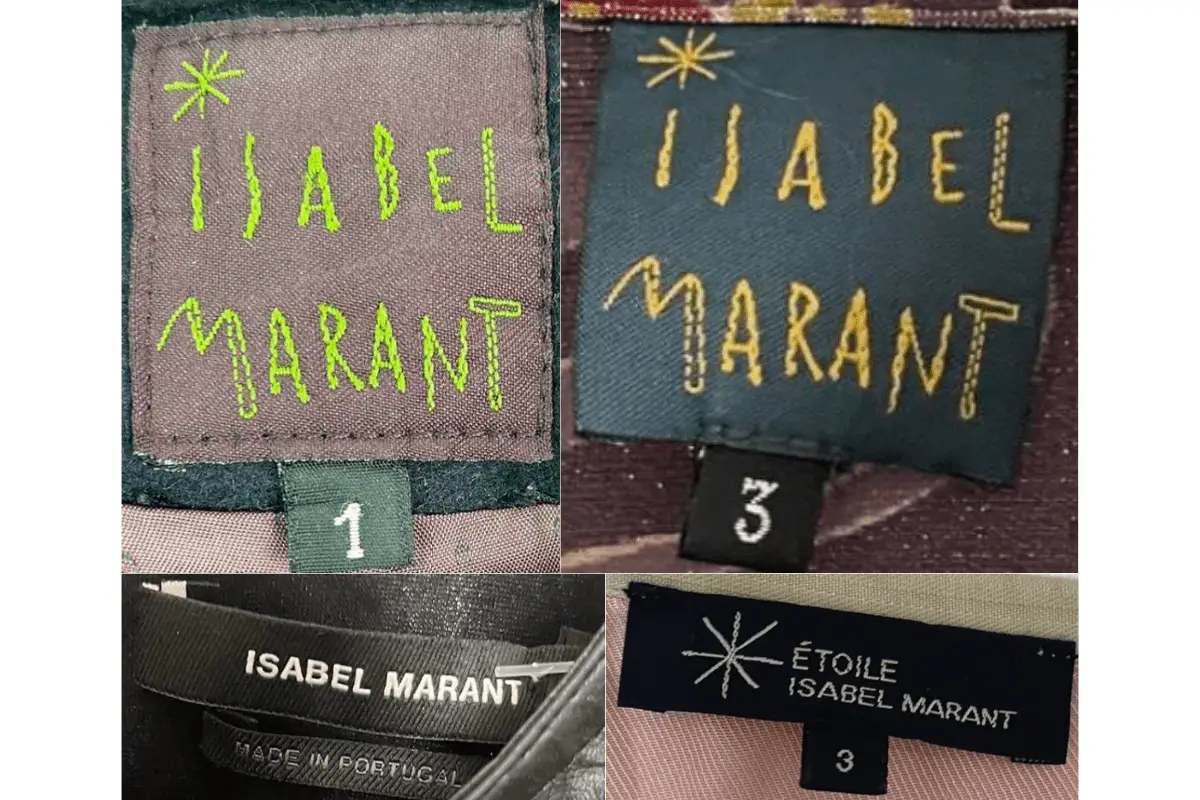
1990s Isabel Marant tags
2000s vintage Isabel Marant tags
- Introduction of more varied tag shapes and textures.
- Country of production starts to diversify, with tags marked “Made in India” or “Made in Portugal”.
- Tags may include additional care instructions in multiple languages.
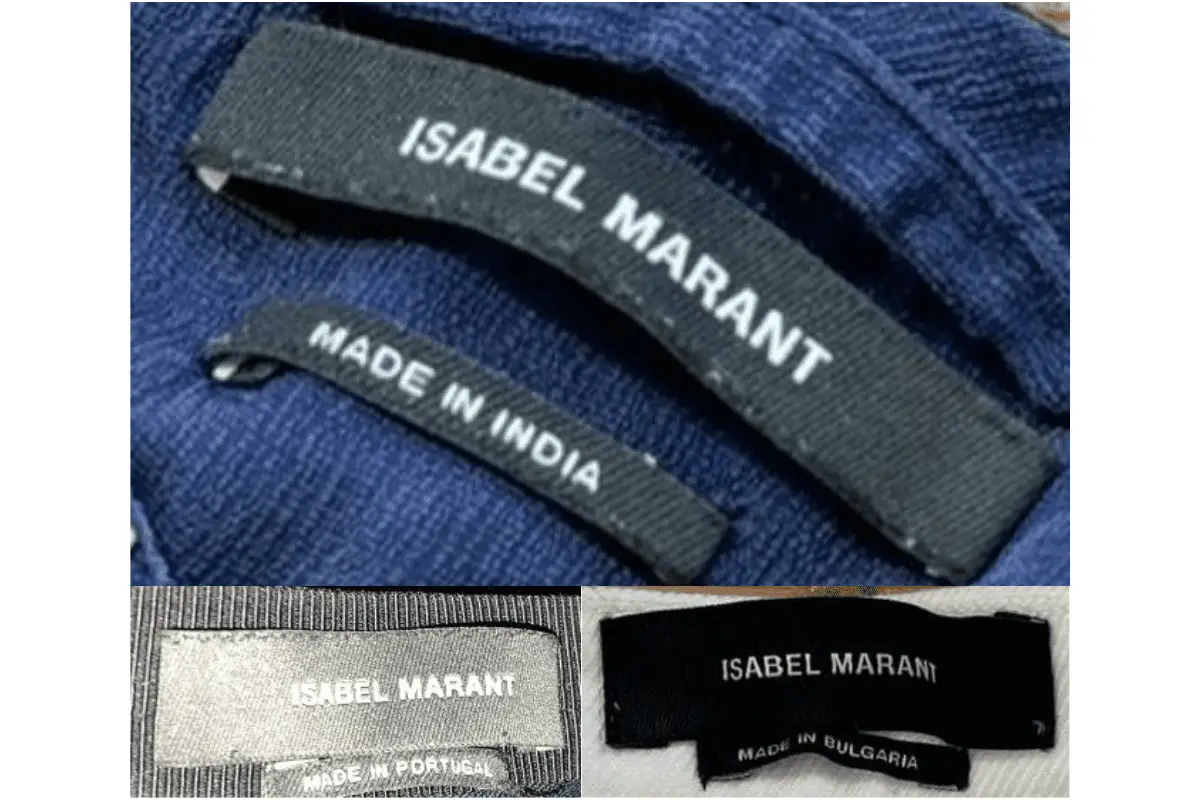
2000s Isabel Marant tags
2010s vintage Isabel Marant tags
- Modern and sleek design elements are introduced.
- Usage of black and white colors for a more contemporary look.
- Inclusion of the ‘Étoile’ sub-brand on tags, often indicating a more casual line.
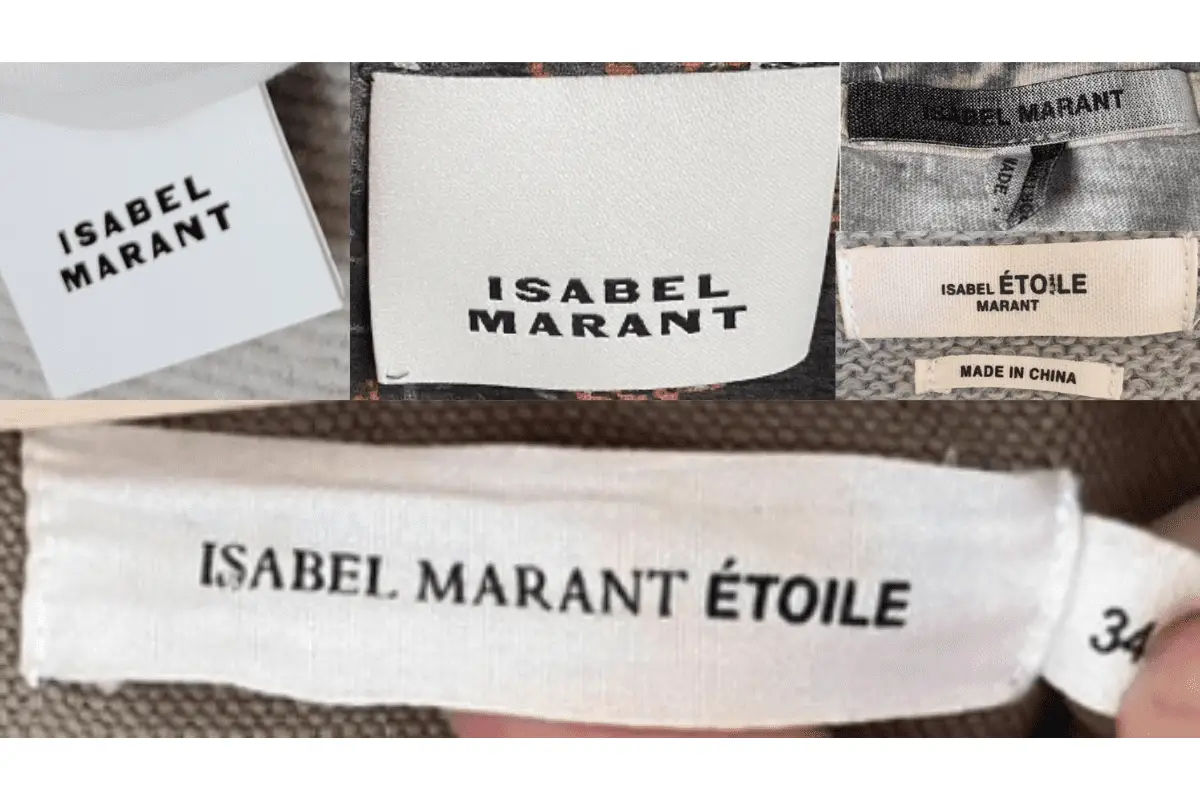
2010s Isabel Marant tags
